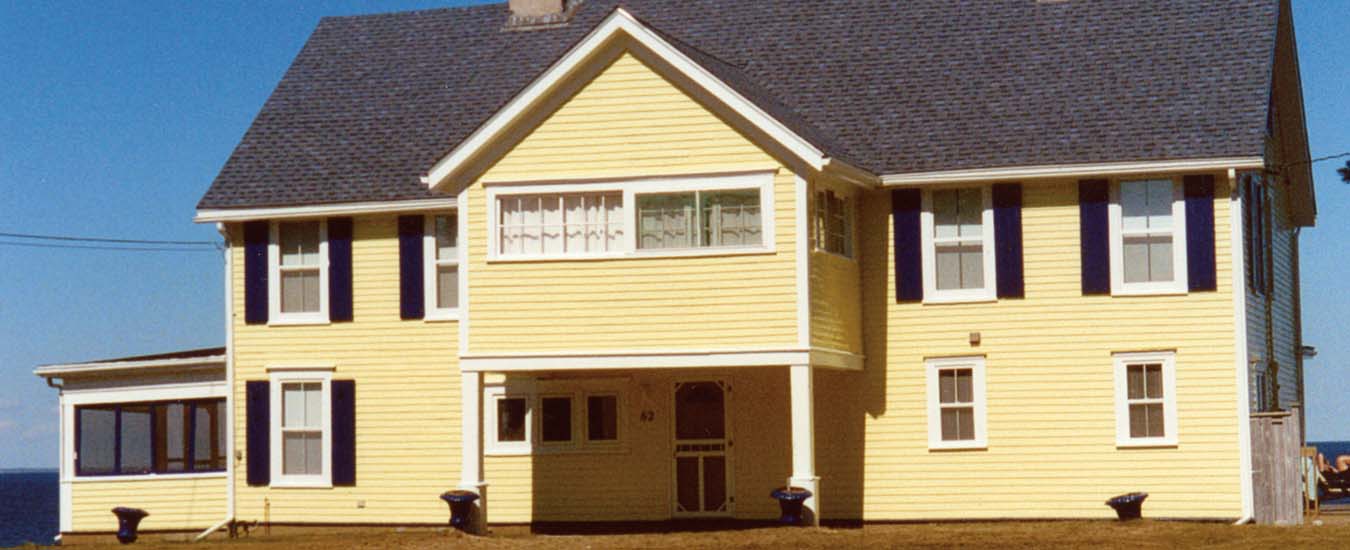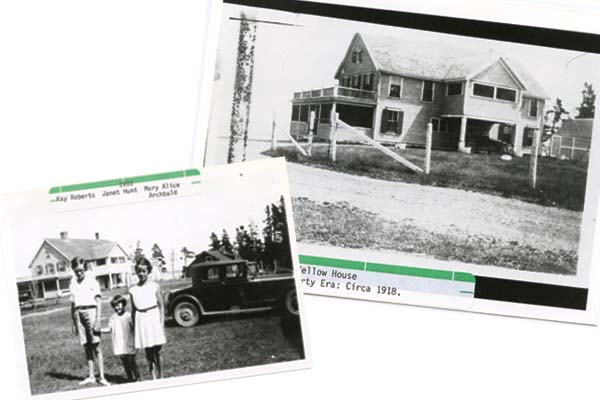A summer cottage at Melmerby Beach is filled with light, colour...and with stories from its past
The story of the Big Yellow House (BYH), our summer cottage, began in 1895 when it was built. The story began for me in 1985 when I was introduced to the BYH by my wife Carolyn. In the early days our neighbours would share titbits about the various past owners of the cottage. I was told that it had started life as a small hotel but it was 1989-90 before I began seriously thinking about its past.
The following narrative describes what I have learned about the history of the BYH and the land upon which it sits.
The property was Crown land which was first subdivided in 1783. The Duke of Hamilton’s Regiment had recently been engaged in fighting the Americans in the War of Independence. They were stationed in Nova Scotia. In an effort to encourage these soldiers to settle in NS, the government issued the 82nd Land Grant which gave free parcels of land to those who would agree to stay. The property on which the BYH now stands was first privately owned as a result of the land grant by Daniel Keith and became known as the Keith Farm. Some of the original owners sold their farms and moved away from the area. The Keiths, however, stayed and built a farmhouse which was still standing until 1918.
With no evidence to the contrary, I assume that the farm stayed in the Keith family for the next 100 years because in or around 1894 one Donald Keith (owner of the farm property) built the original version of the BYH. The house was actually built as the Seaside Hotel and was very well located overlooking one of the most beautiful beaches on the Northumberland Strait. In those days there were virtually no privately-owned cottages along the shore. However, there were many people in New Glasgow and the neighbouring communities who could afford to take a vacation at the beach. Thus the concept of a seaside hotel was probably economically viable.
Below: The caption on this photograph reads, “1933: Kay Roberts, Janet Hunt, Mary Alice Archibald.” RIght: Big Yellow House, Flaherty era, circa 1918.
On July 1, 1895, the Seaside Hotel opened its doors with a great deal of fanfare. Although the Keith family owned the property, a Mr. G.M. Bevan actually operated the hotel business. On Saturdays a steamer could be taken from New Glasgow to the hotel in the mornings and return in the evenings. On Mondays, Wednesdays and Fridays, a team of horses and carriage owned by Church Livery would leave New Glasgow at 2:00 p.m. and transport visitors to the hotel. The fare was 50 cents return or 25 cents one way.
The only living person I ever met who stayed at the Seaside Hotel in its heyday was Janet Wall of New Glasgow. In 1989 when I spoke to Janet she was 96 years old but still clearly recalled staying at the hotel with her mother. Apparently, it was quite common for the women and children to stay for the whole summer whilst their husbands were working in town (New Glasgow, Stellarton, etc). The men would come to the beach for the weekend. In those days women’s bathing suits were mostly black in colour and covered them from neck to feet. During the week the women became very daring, swimming and sunbathing with their stockings off. Janet described the hotel as looking “like a big barn with windows” from the outside but being “quite nice” on the inside. She remembered that dances would be held in the big room on Saturday nights with a fiddler providing the music. According to Janet the fiddler’s repertoire was limited. She remembered someone asking him to play a “one step” and he played it to the tune of “Redwings.” Then someone requested the “Lancers” and the fiddler said, “Will ‘Redwings’ do?” Janet also recalled the words to a song that people used to sing around the hotel although it is unknown who the author is or whether it was an adaptation of a popular song of the day.
Millionaire’s mansion by the way
And the Hotel by the bay
Harold Square, I don’t care
Melmerby take me there.
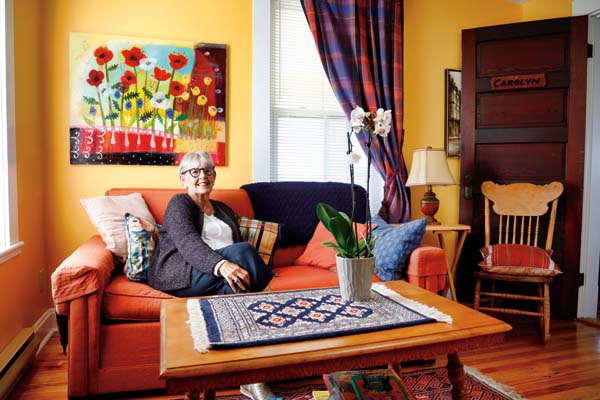
Carolyn Beatty sits in one of her favourite new rooms, created when she and Barrie opened up the main entry of the cottage
Janet was very helpful to me with my research and allowed me to borrow some of her personal photographs which I copied for the BYH album. As well as staying at the hotel as a child she later became a friend of Helen Flaherty, the daughter of a subsequent owner of the property.
During the course of my research I wondered if I would uncover hidden secrets of a bordello or secret gambling joint but it seems that Victorian mores prevailed at the Seaside Hotel, and black stockings and black bathing suits were haute couture. One historical item I did find in a storage room was a large brass porthole which I subsequently confirmed was from the sailing ship Melmerby after which the beach was named. I now have it mounted on a wall in the BYH.
In the early 1900s more families were starting to build their own cottages along Melmerby Beach and other beaches in the area. Consequently, business at the hotel started to fall off. The Land Register in the Pictou County offices indicates that Donald Keith sold a number of lots along the shore west of the BYH. Unfortunately, after fewer than 20 years, the Seaside Hotel went out of business.
In 1914 Mr. Charles Flaherty, a civil engineer from Boston and president of the Pictou Electric Company, purchased the hotel and about one acre of land and converted it into a private summer home. One of his first acts was to turn the building around 90 degrees to its present location.
This amazing feat was accomplished by using manpower and workhorses. An early addition was the carport and the second floor room at the south side of the building. This provided a covered space for Mr. Flaherty to keep his car. Soon after moving in the Flahertys hosted a fancy dress party to get acquainted with the neighbours.
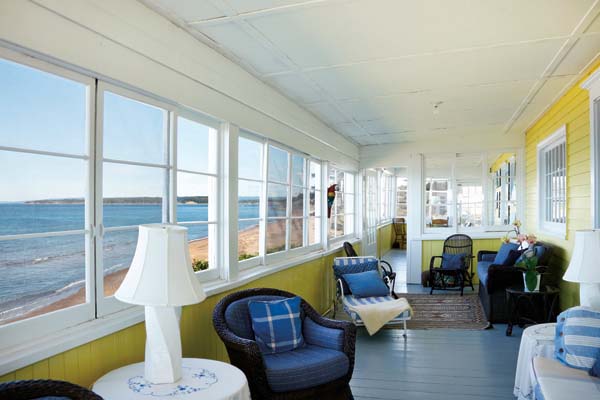
Sunlight fills a guest bedroom and falls on one of the Kilm rugs that Carolyn and Barry brought back from travelling and working in India.
Helen had two younger brothers named Bob and Charles Jr. (Wink) Flaherty. They, along with their cousin Dickie Blair, were all interested in cars and had models of that era. They would play on the beach for hours making roads in the sand pretending to be driving the cars. More importantly, Helen had a boyfriend who used to visit her at the BYH in a huge Pierce-Arrow convertible with enormous headlights. I can imagine what a sight it would be to see this incredible machine appearing out of the tree lined road and onto the BYH property. The highlight of the day would be a ride in the Pierce-Arrow for the younger siblings.
Subsequently, Helen left for MacDonald College in Montreal, married her boyfriend and moved to Boston.
In 1919 the BYH changed hands again and the new owner was H.B. McCulloch, a New Glasgow merchant, who subsequently became the longest serving federal Liberal M.P. in Canadian history. In Pictou Country’s History he is described as follows. “McCulloch said little in Parliament but said much in Government Offices where his accomplishments as a lobbyist made for his reputation as a first class representative.” After winning five elections and remaining in office for 22 years, he lost his seat with the Liberals in 1957. H.B. and Mabel McCulloch had six children. The family spent every summer at the BYH. Over the many years that they owned the property it was a center of social activity for family and friends.
H.B. installed a clay tennis court at the back of the house which attracted some talented local players. G.S. Jackson and Garfield McDonald used to play there and went on to win the Maritime Men’s Doubles Championship several times. Garfield MacDonald had made a name for himself at the 1908 Olympic Games in London. He was a member of the Canadian Track and Field Team entered in the High Jump event. During the course of the games Canada’s representative in the triple jump event became ill and the team coach asked Garfield if he would replace the sick athlete. Garfield went on to win the silver medal in the triple jump.
In the 1920s the BYH still had oil lamps and a coal range in the kitchen. Electricity did not come until 1937. Water was obtained from a communal well. There was a large hand cranked telephone in the living room on the west wall which shared an 18-party line.
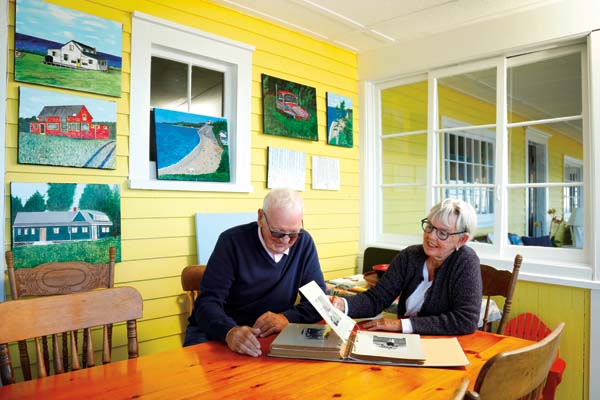
In 1938 Katherine (Kay) McCullough married Jimmy McKay. They had three children. For many years they spent summers with H.B. and Mabel McCullough. In 1949 the McKays assumed ownership of the property. They were very involved with friends and the social life at the beach. I learned that it was they who were responsible for many improvements and renovations to the property. One major renovation was to pave the tennis court and surround it with a proper high fence. Inside the house they did a major renovation of the kitchen. This included installation of a proper sink unit and taps to replace the hand pump. An electric hot water system was also installed and the coal burning stove was removed. Another major improvement was the installation of a bathroom with a bathtub, shower and a flush toilet.
In the early 1970s the McKays decided to move to the Bahamas and the BYH was sold to a newly-formed three-man consortium. In 1974 it was purchased by Carolyn and her then husband David. They had three sons who spent every summer of their early life at the BYH and a great deal of their adult life there as well. In 1985 a new partner came into Carolyn’s life (Barrie Saxton). I was charmed by it like everyone else who spends time there. Now the family has grown and her adult children and grandchildren from Brazil, California and Toronto come regularly.
Since retiring some twenty years ago Carolyn and I have spent more and more time in NS at the BYH. We have consolidated old friendships, made new friends and enjoy a very full active social life in Pictou County. In fact, the only reason we have not moved our primary residence to NS is because we have so many family members, particularly grandchildren living in greater Toronto. A few years ago I tried painting with acrylics and discovered a new and enjoyable hobby. I have no particular genre; I will tackle almost anything. I don’t pretend to be an artist and I give away most of my work or paint over it. The front porch overlooking Melmerby Beach is my studio and Pictou County is my territory, so I have painted a lot of trees and water. Every year friends and neighbors will ask the question “Are you still painting”?
My answer is usually “Oh yes. I’m still trying to get the water to ripple on the canvas.”
